If you stroll through an outdoor shop and check labels on their products, it is very likely that you will besides quick-drying, moisture-wicking, durable etc. also see lightweight. There is a lot of debate in outdoor circles whether lightweight gear is overrated, and ultralight indeed means making compromises. But is it worth to make compromises? Well, it’s kind of obvious that hiking with a heavy backpack is not comfortable and increases a chance for injuries, and there are many studies that support this. However, I couldn’t find a single study that would focus on heart rate rather than on subjective responses of hikers. You might ask yourself why heart rate is so important? Put simply, heart rate is important because it has a big impact on exhaustion – the higher your heart rate, the faster you will become exhausted.
Therefore, I decided to conduct an experiment in which I observed and compared my heart rate while carrying backpacks of different weights (i.e. empty, 10 kg – 22 lbs. and 20kg – 44 lbs.). To make things a bit more interesting I also conducted this experiment at different inclines (5%, 10% and 15%). To get comparable and reliable measurements, the experiment was conducted on a treadmill which was set to 5km/h (3.1 mi/h), regardless of incline. Outdoors I would have problems walking at the same speed all the time and thus the results would not be directly comparable because heart rate increases with speed. This was obviously not a problem on the treadmill where I had to keep the pace no matter how uncomfortable or exhausting it was.
Table of Contents:
- What is the optimal heart rate zone for hiking?
- How did I measure heart rate?
- Effect of backpack weight on heart rate at 5% incline
- Effect of backpack weight on heart rate at 10% incline
- Effect of backpack weight on heart rate at 15% incline
- Increase in average heart rate at different inclines and loads
- Conclusion
What is the optimal heart rate zone for hiking?
When you are hiking, mountaineering or backpacking you ideally want to keep you heart rate between 50% and 70% of your maximum heart rate. In that zone your muscles get energy via the aerobic system. The aerobic system uses fat rather than carbs to create energy and doesn’t create lactic acid. Therefore, you can endure activities in this heart rate zone for longer than when exercising with a higher heart rate. You can read more about heart rate zones in this article from Polar.
But how to calculate your maximum heart rate? Your maximum heart rate can loosely be estimated by subtracting your age from 220. In my case it is 190 and thus I try to keep my heart rate below 133 (=70% of 190) when I’m hiking, backpacking or mountaineering, especially when I know that it will be a long activity. This is of course not always possible. I have problems keeping my heart rate so low on very steep stretches and while hiking with people who are in better shape than I am. Nevertheless, I do my best not to exhaust my body too fast.
So, if a heavy backpack increases your heart rate you will have to hike slower to stay in the aerobic system. However, this is not always ideal since most hikes are time limited. You probably want to come home before the night, don’t want that your friends are waiting for you at the car etc.
How did I measure heart rate?
I measured my heart rate with the Suunto 9 watch and Suunto Smart Sensor (heart rate belt). Here are the 9 different activities, divided over three sessions, during which I tracked my heart rate:
- 5% incline, without backpack
- 5% incline with 10kg backpack (22 lbs.)
- 5% incline with 20kg backpack (44 lbs.)
- 10% incline without backpack
- 10% incline with 10kg backpack (22 lbs.)
- 10% incline with 20kg backpack (44 lbs.)
- 15% incline without backpack
- 15% incline with 10kg backpack (22 lbs.)
- 15% incline with 20kg backpack (44 lbs.)
Before I started tracking the heart rate, I walked one minute on the treadmill with the given load and at the given incline so my heart rate settled. After the activity, I checked the average heart rate in the Suunto Movescount web app (discontinued in 2020 but reliable until then). All activities lasted for exactly 12 minutes and the treadmill was always set to a speed of 5km/h (3.1 mi/h). Note that the inclines above are in percent and that 100% percent incline converts to 45-degree angle. So, we are not talking about very steep slopes here. For example, on the Lagazuoi trail (which I did in summer) the average incline from the starting point to the peak was around 18% (10°) which is more than I tested here.
Effect of backpack weight on heart rate at 5% incline
Average heart rate without backpack: 110
Average heart rate with 10kg backpack: 113
Average heart rate with 20kg backpack: 117
Explanation
Now, this chart indeed looks steep, but if you look closely enough, you will see that my heart rate actually didn’t change much while I was adding weight to the backpack. My heart rate increased only for 3 BPM with 10kg backpack and for 7 BPM with 20kg backpack in comparison to carrying no load. So, is the ultralight gear only a marketing trick? Not really, but we can conclude that on flat trails having ultralight gear is not of the utmost importance. Now let’s see what happened at 10% incline.
Effect of backpack weight on heart rate at 10% incline
Average heart rate without backpack: 119
Average heart rate with 10kg backpack: 128
Average heart rate with 20kg backpack: 143
Explanation
At 10% incline the difference in average heart rates was much higher. Without a backpack my average heart rate was 119 BPM and with a 10kg backpack it was 128 BPM. With a 20kg backpack my average heart rate increased to no less than 143 BPM, meaning that I was already in another heart rate zone, the so-called lactic threshold system which causes lactic acid to form. Therefore, you can only endure it for shorter periods of time. So, what did we learn here? The steeper the trail, the more important it is to have lightweight gear. Now, let’s have a look at average heart rates at 15% incline.
Effect of backpack weight on heart rate at 15% incline
Average heart rate without backpack: 140
Average heart rate with 10kg backpack: 161
Explanation
Wait, where is the average heart rate for 20kg backpack? Well, the thing is that I couldn’t keep the pace for more than 3 minutes at the time with a 20kg backpack at 15% incline and therefore I decided to not include the measurement for this segment. As you can see, my average heart rate was already 160 BPM with just a 10kg backpack, which is indeed very high (84% of my maximum heart rate). Nevertheless, this test confirms our assumption from above that the steeper the trail, the more important it is to have lightweight gear.
Increase in average heart rate at different inclines and loads
Let’s have a look at the first three columns in the chart above where we are comparing increase in average heart rate between “no backpack” and “10kg backpack” at different inclines. We can see that at a 5% incline the heart rate increased for 2.7% when I switched to a 10kg load; at a 10% incline the switch entailed an increase of 7.5%, and at 15% incline carrying a 10kg backpack increased my heart rate with 15%. This in simple terms means that the steeper the trail, the higher impact the load has on your heart rate and thus exhaustion.
Now, let’s have a look at the two orange columns which represent increases in average heart rate at 10% incline. We see that when I switched from “no backpack” to “10kg backpack” the heart rate increased for 7.5 percent. So, we would expect that when I switched from “10kg backpack” to “20kg backpack” the heart rate would increase for another 7.5 percent, right? But that’s not the case – the heart rate increased for almost 12 percent when switching from 10 kg to 20 kg. This means that the heart rate does not increase linearly with the load but rather exponentially. Put simply, carrying a 20kg backpack is not twice as hard as carrying a 10kg backpack – it is more than twice as hard.
Conclusion
During this experiment I figured out that having lightweight gear is especially important for steep trails. The steeper the trail, the more the weight of your backpack increases your heart rate. So, should you invest some money in lightweight gear? I definitely think so. Keep in mind that no trail is completely flat and that you want to keep your heart rate within the aerobic system while you are hiking, because you can endure it for longer. If you’ll carry a too heavy backpack on a steep trail, it is very likely that your heart rate will enter the lactic threshold system sooner rather than later. This will result in 3 minutes hiking – 1 minute resting, 3 minutes hiking – 1 minute resting and so forth. Definitely not a pleasant thing for you or people you’ll be hiking with. Not to mention that a heavy backpack also increases discomfort and chance of getting various injuries.
I’d love to hear about your thoughts on lightweight hiking/backpacking. Write them in the comments section below.
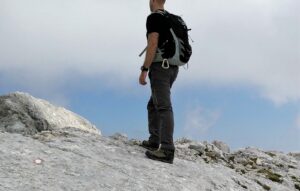
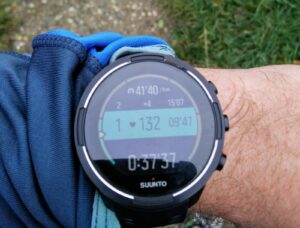
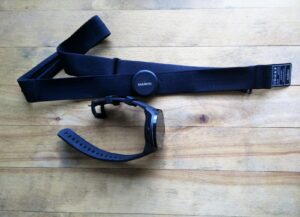
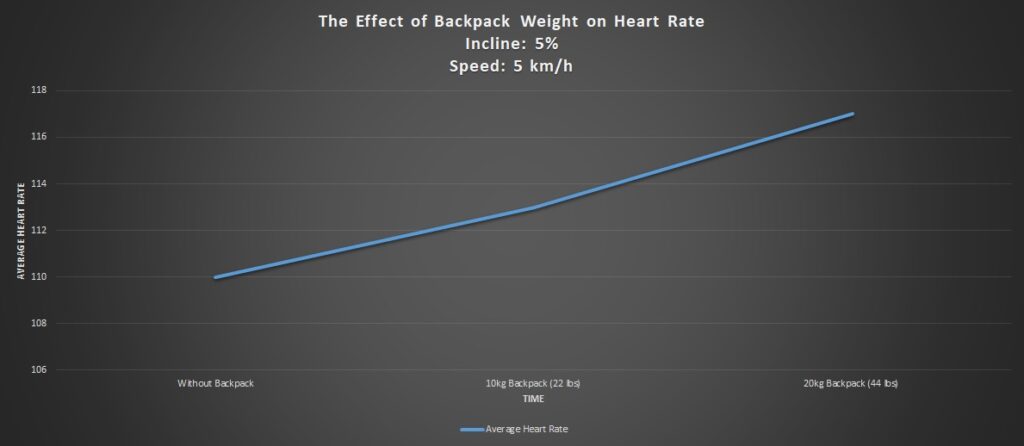
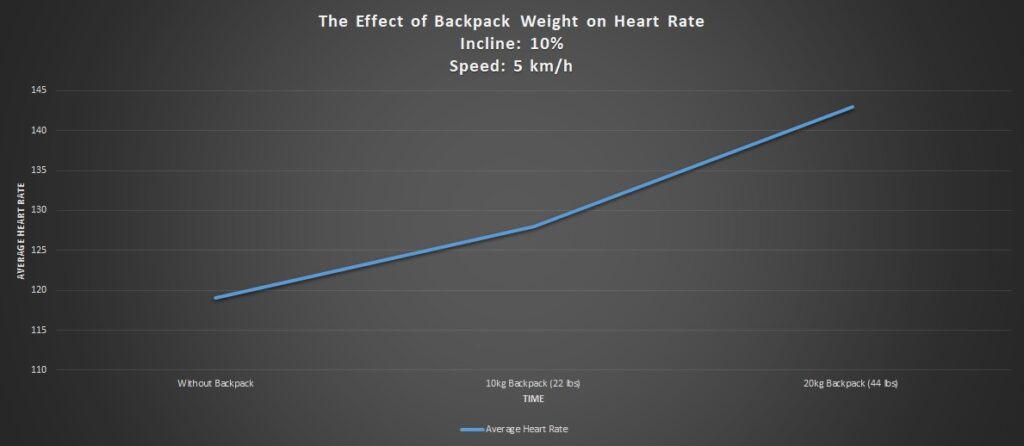
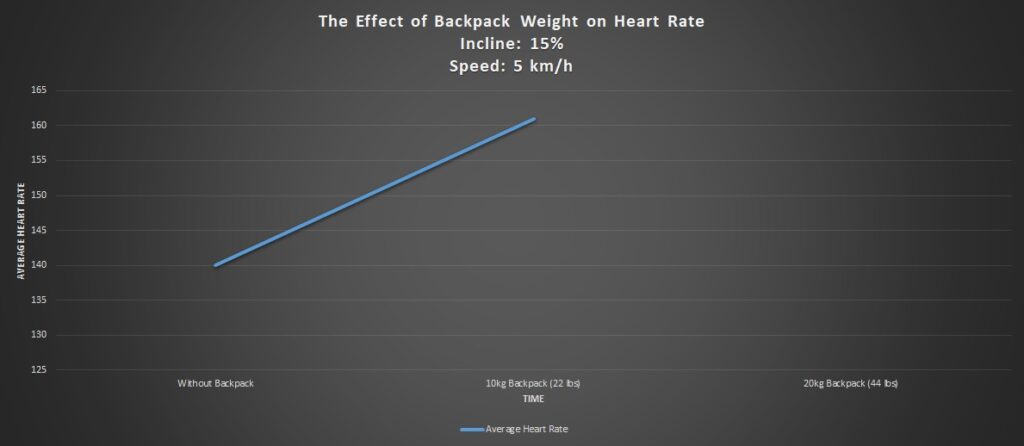
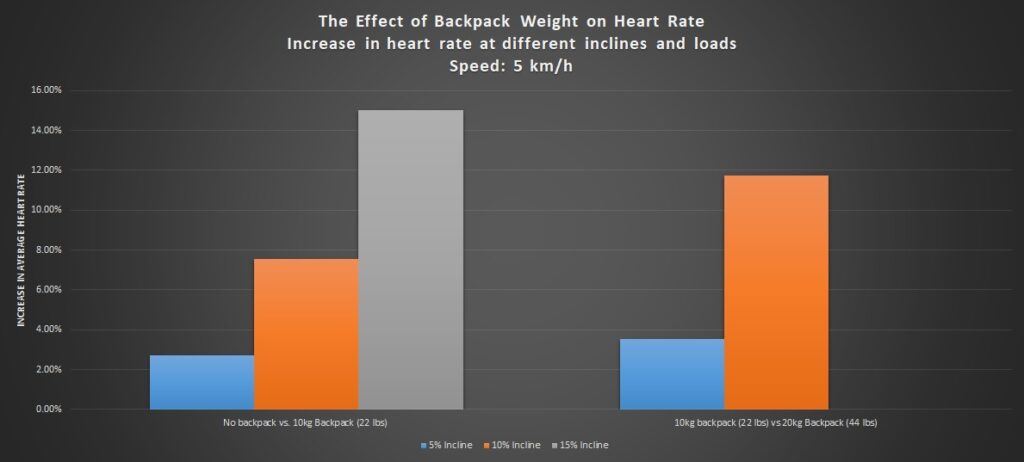
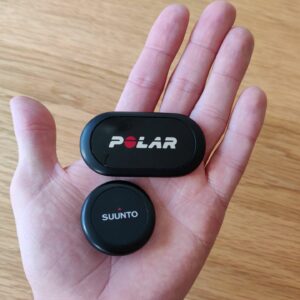
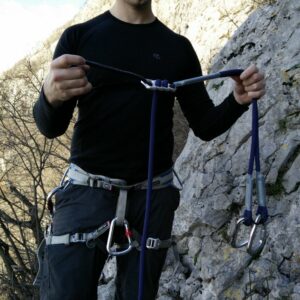

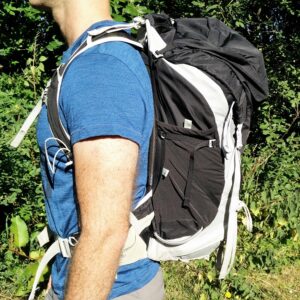

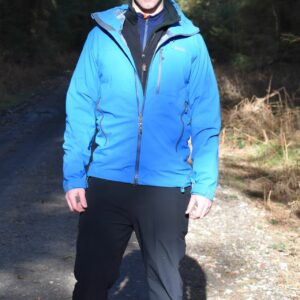




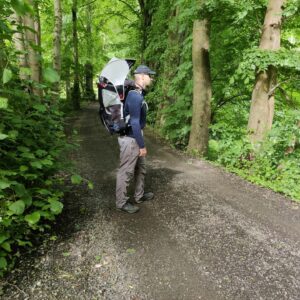

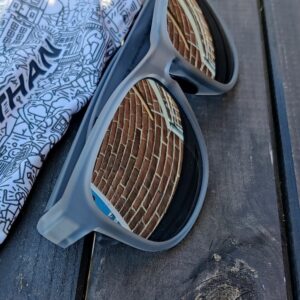







These are very interesting findings. I am planning my 2nd attempt to the Drakensberg Grand Traverse. With my first attempt I started with a 26kg pack (unsopported Traverse). From your findings, would you say it is better to walk in straight lines across contours to shorten the distance as much as possible, rather than following contours? This will results in sometimes steep hiking but then for shorter periods/distances and obviously longer periods of contour following inbetween.
Hi Ernst,
I’m not familiar with the Drakensberg Grand Traverse, but it seems like a very long trail with a lot of elevation gain. I would rather avoid super steep hiking. On very steep stretches it’s hard to keep the heart rate within the aerobic system, especially if you are carrying a heavy backpack – as explained in the article the steeper the trail, the more the load increases your heart rate. It’s true that it will take you more time, but you’ll be able to keep your heart rate low and thus avoid the lactic acid buildup – which basically means you will wake up fresher and have more stable tempo during this multi-day hike.
Thanks for your prompt reply.
The following link will give you a good idea of what the Drakensberg Grand Traverse is about. You should join me coming April ……
240km over 12 days with approximately 10000m total ascent.
https://www.hikingsouthafrica.co.za/drakensberg-grand-traverse/
Wow, this looks amazing! Are you bringing all supplies with you or are you resupplying on route? I’d love to come, but it’s far away from my location 🙂 Hope to do some great trails in the Alps in February 🙂
So, I conclude this that carrying a lighter pack allows you to go faster. Certainly at 15% grade you can carry the 20kg but not at the 3.1 mph. Maybe st 2.5 or even 2.00 mph.
I backpack to be out in the mountains. I am in no hurry to get to camp. I stop and take pictures along the way. I get it, doing a through hike it would amount to a few extra days on the trail. I have some UL gear but where I climb and backpack, Gear Failure is Not an Option and I find, some of the UL gear is pretty flimsy, and uncomfortable (because I left my puff at home to save 18 ounces). We can get overboard and I think what is happening is many people are “following the flock” can it has become competitive UL. Remember, it is supposed to be fun. If I have to zig zag on a trail a zillon time to avoid stepping on a rock to avoid foot pain, well, that is not fun.
Bill G.
Hi Bill,
I agree with you to some extent. Nevertheless, I often meet hikers in the Alps who are carrying way too much on day hikes. I could literally spend a couple of days there with that gear 🙂 Carrying so much is for sure not comfortable. So, I guess everybody should figure out for himself how much gear he needs and how much he can carry comfortably.